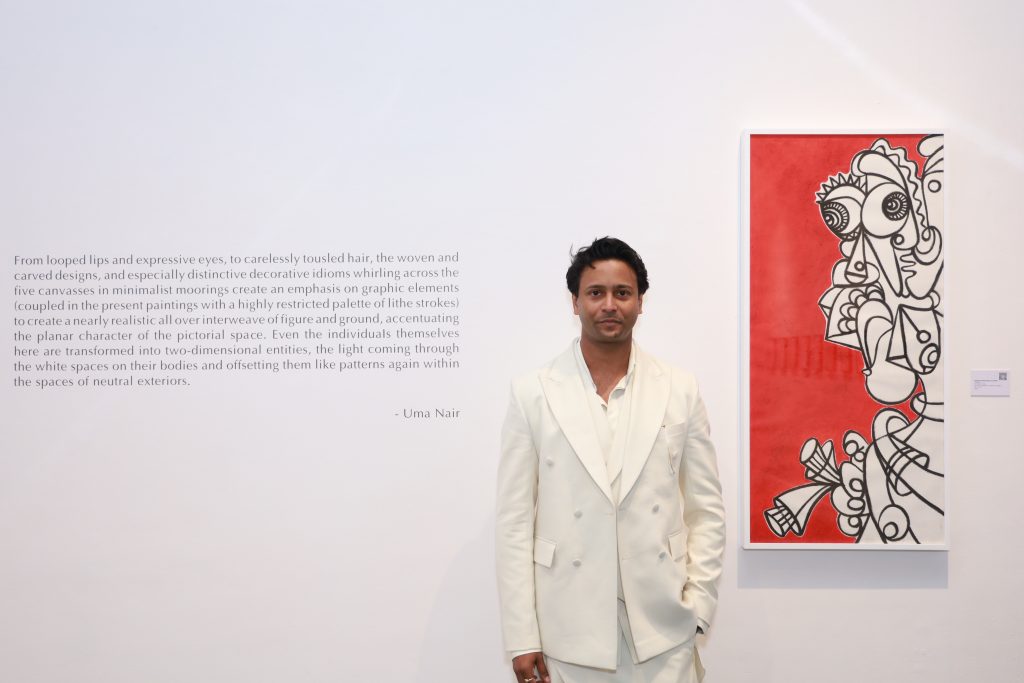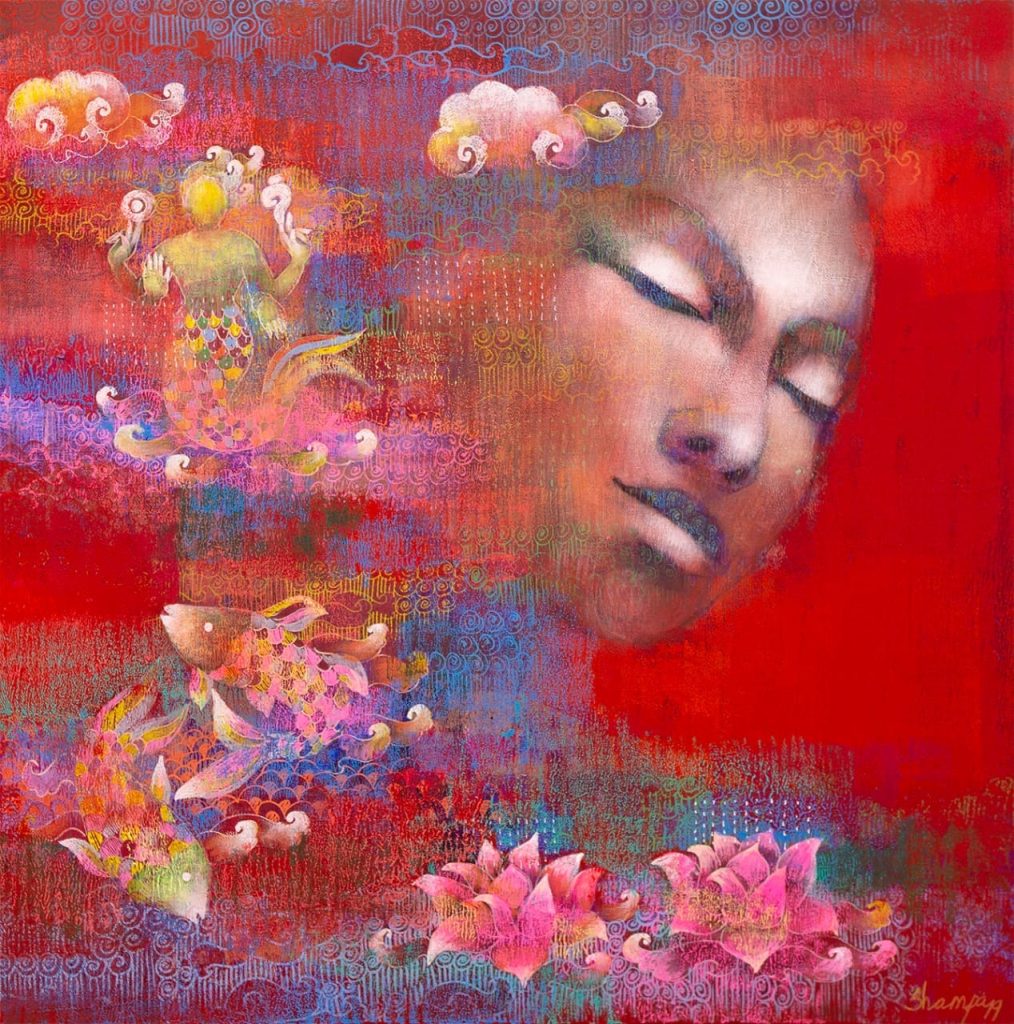There is a progressive use of lines and cheerful connotation of an abstract abyss in Nandan Purkayastha’s ‘Genesis’. His works emerge out of the historical and ancient traditional works that he adapts in contemporary form and produce a completely new take on them, giving rise to vulnerable and imperishable thoughts. His work is neatly drawn and cumulatively composed. His unbiased expression and reliable perspective on lines create an array of characters that continuously grow and present an impression of modernity through traditional techniques that merge effectively with spatial-temporal concepts and offer vivid patterns to scrutinize the narratives associated with former lucid tales. The work draws attention to the scale of figures that establish the noticeable connection with the self. Upon closer inspection, the figures start moving, and the gaze becomes static. There is mysterious depth and constant construction of non-dualism in his works that establish the multiple characters connected in a way that the illusion of oneness holds the attention.
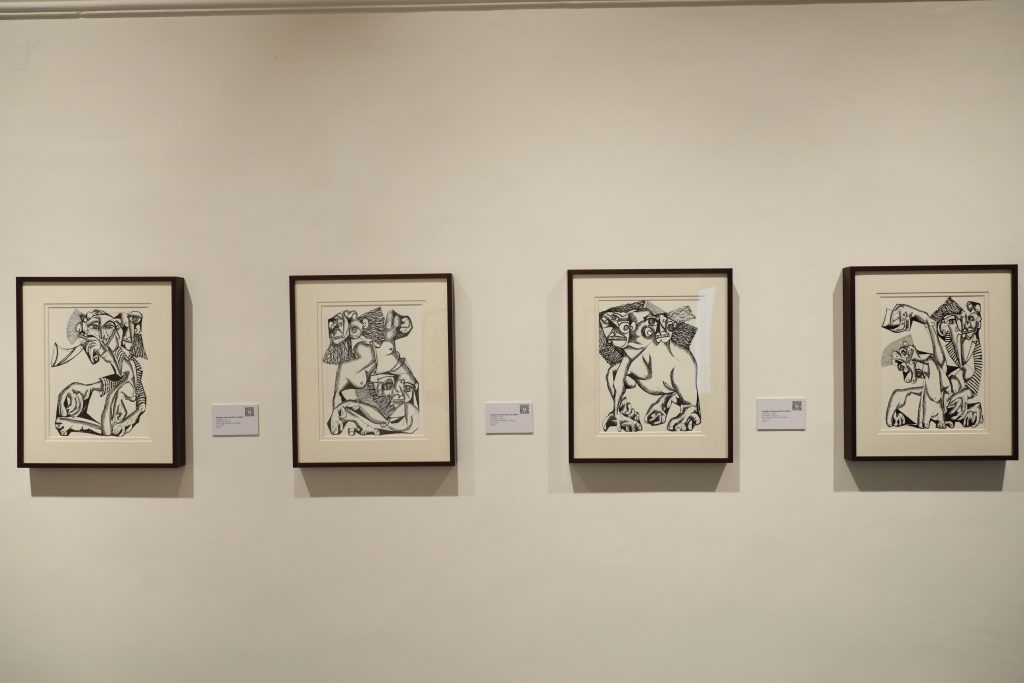
He picks up the traditional figures and transforms them meticulously to create an unwavering, and critically designed wide view that induces brilliantly in his vision. His works depict the magic of mathematics, every line, shape, and composition creates a numerical, by deducing several permutations and combinations. He puts on canvas whatever he sees. From nature to the intersection of human lives, he examines these factors in a unique creative way that allows ontological inquiries about the existence of being and non-being. His paintings, upon dissection in three equal planes, generate a perfect pictorial representation of elements that support his works on the overall narrative and enhance the juxtaposed colours, creating subtle contrast between the dark and light hues. His mediums become alive, participate deeply in the expansion of gross figures, and shape them to further inherited cognitive perception.
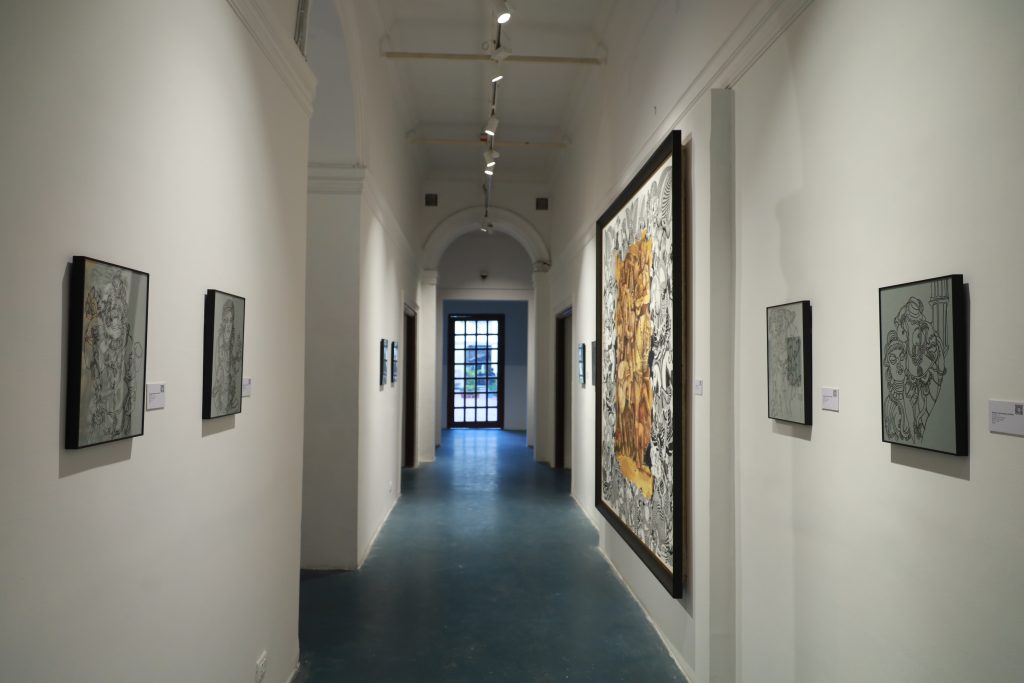
His palette represents his passion for lines and takes us through a magical journey of emotional and psychological aspects; it drives our perception and assists us in scrutinizing the visual tones, unseen, and unheard tales of Utopia. His works also depict the bridge between the past, present, and future. The visual language of his attains the highest value and generates crucial contexts of beauty in distorted and decorative ways. Dialogues and discourses become perishable and are reborn in his work. He willingly breaks the notion of an ideal figure and uses his pen brilliantly to measure the supreme connection of the self with the images. He incorporates myths and stories from ancient wisdom and adds his parameters of assumption, resulting in a highly interactive work that reshapes the perception. Nandan’s motifs are very well woven and emit an irresistible affection with the shapes that reside in the cerebral space of the viewers.
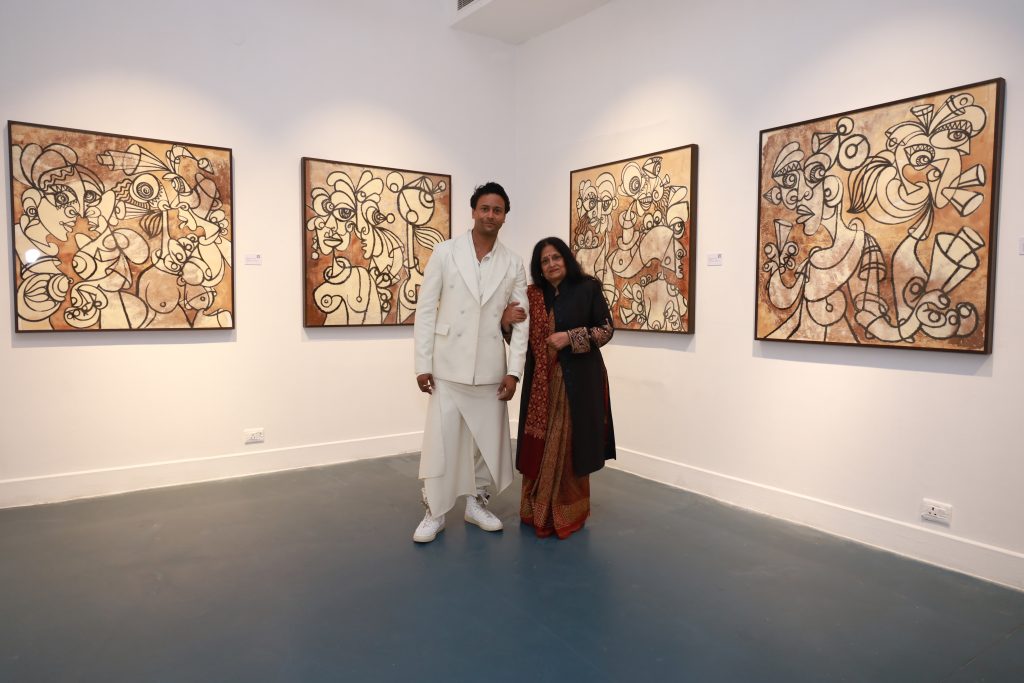
His sculptures are made up of brass, knit visual structures extremely well with the creative blend of contour lines that add details. His works create deeper dimensions because of the gradation of colour, find subtle layers, and add the optimized view of the same. The elements come out of the experiments and experiences of the artist; his memory plays with the entire cosmos and interrogates the divine connection with the self. Mythology is heavily included in his work, which acts as a theatrical performance. All other elements also contribute to the overall narrative that becomes a mise-en-scène. Nandan says, “I take inspiration from anywhere and everywhere. Picasso, of course, has always been a part of that influence. His works are the inspiration for all of us.”
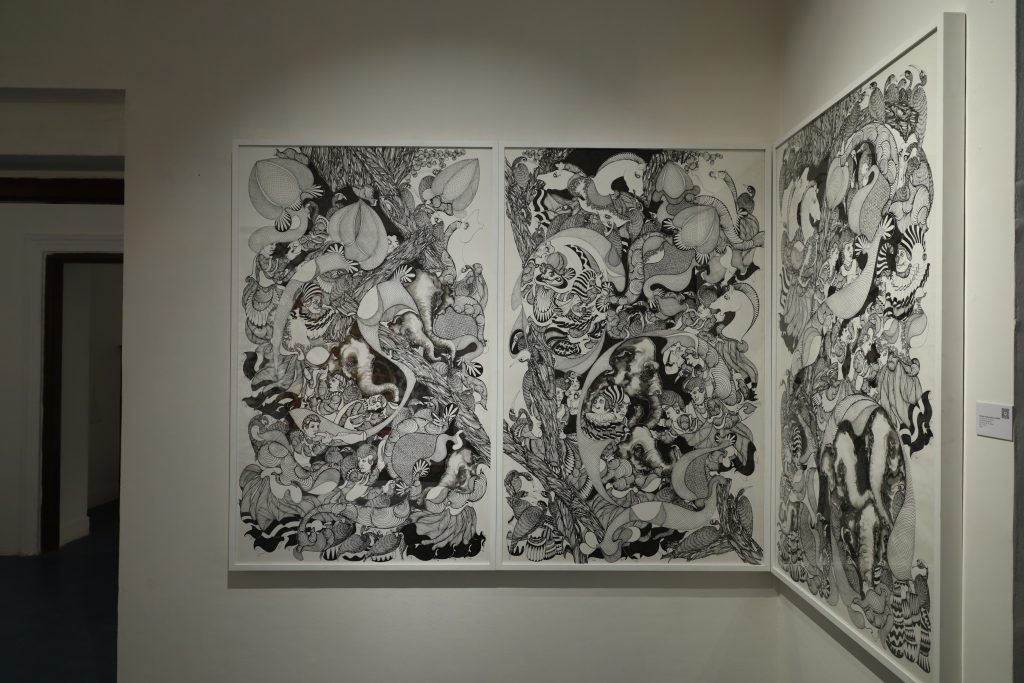
He creates a fantasized reality by including characters from the cosmos, depicts the magical nature of ever-flowing lives, and gives imagination a better position than reality. His work generates feelings of despair and dichotomy and feels bright and light simultaneously. With linear patterns and repetitions of form, the characters come together to reflect a collection of discourse. His figures seem to move in pictorial planes and give an idea of everyday living. Nandan Purkayastha to Uma Nair, “Drawing and sketching ideas has been important for me all these years. I carry a small sketchbook with me everywhere; it helps me as an artist to develop and understand what I want to create directly onto the pages. It begins with the process of what I want to make, how best to make the ideas in my head, and the finality of the images springs forth with spontaneity. I have learned in my practice that my plans are a summation of my artistic ideas that evolve as I keep creating.”
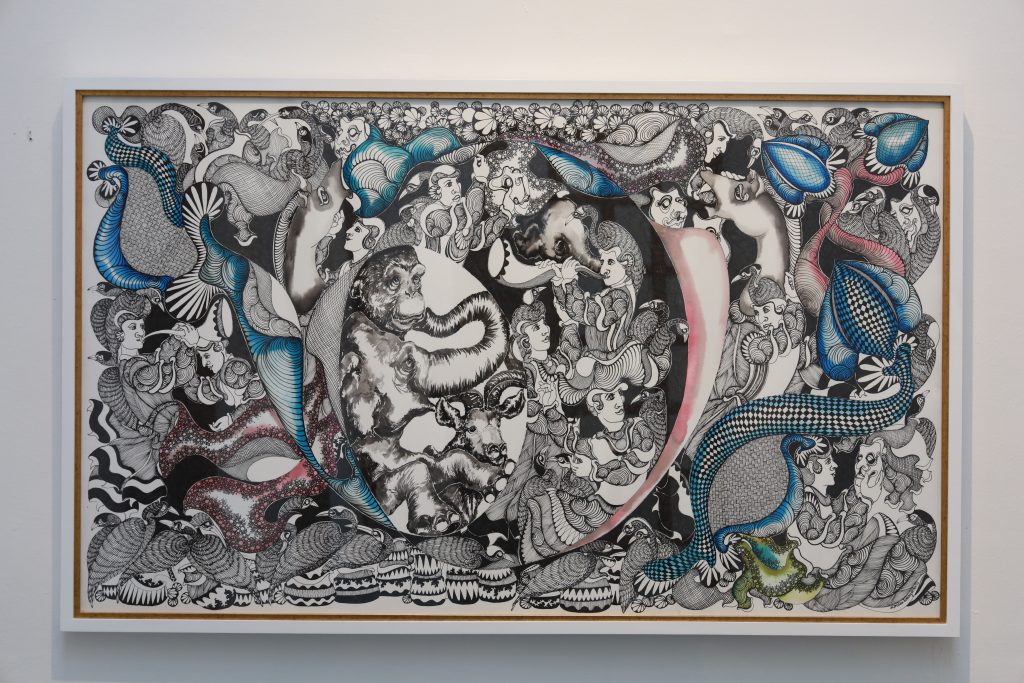
Nandan shares his process: “My journey started in childhood; I saw trees plucked, and these people who used to make idols and the cultural hub of Assam. It happened twenty-five years ago. Drawing was very essential for me as a kid, and now with my maturity, I learned that every element has its character. Therefore, you start taking these elements and work on them. Now, if you talk about the abstraction part, I wanted my line drawing to be strong. My elements have to be strong enough so that I can go to any extent with my drawing, so when I talk about different scales of my work, it is the control of lines in these. You cannot imitate the style, it grows inside you with time, I start with the line, and I do until I am getting the thought, the moment the thought halts, my lines end. It is an organic process and I always find that if you have strong lines you can always turn it into any form. There are two versions of the works; compositions are different in both in terms of line drawing. My line drawings are deeper rather than the colour ones.”
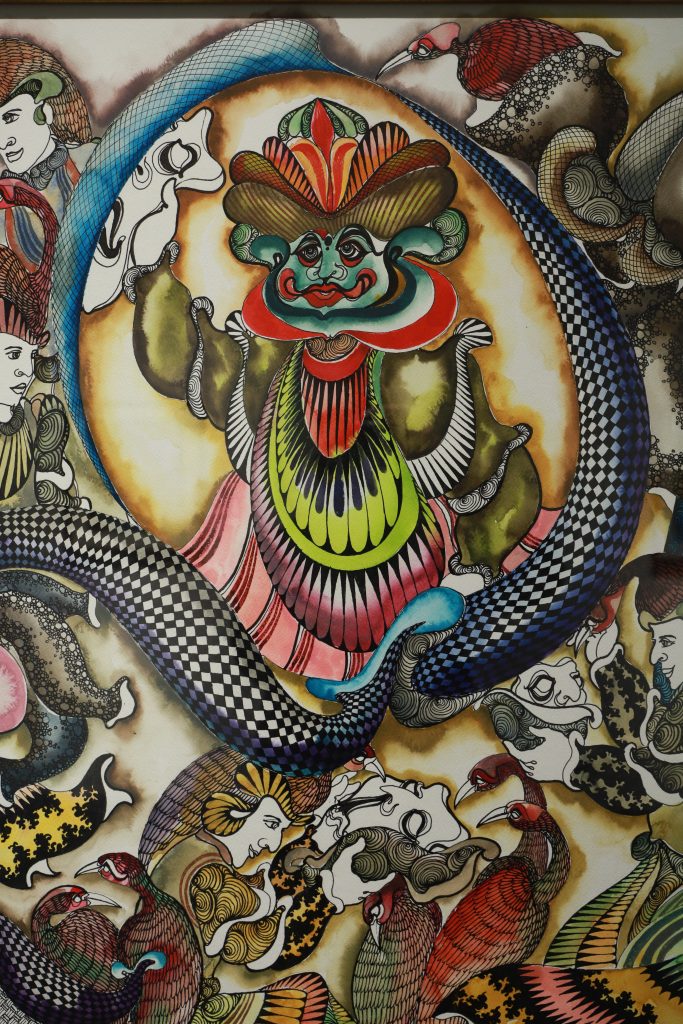
When asked about the characters, he explains, “I wanted to represent the characters in line drawing, where I wanted to recreate those characters in my language, and it should have the same kind of impact as the same figure. It is a version you create and show them how beautiful it could be. I wanted to shape them in my style in contemporary form; it is just the innovation of something new. I am still on the journey of identifying what’s going to be next, so I think that’s what helping me.” He further adds, “I break the form of the character, I move my line from one point to make another character out of it. It has to be multiple characters, the cosmos of characters. Every expression has its storyline, and you do not think about it initially, it just flows out of you. Each storyline has its own direction. If you have probably seen a nude figure here, it came from my childhood when I saw the Titanic for the first time. There are many possibilities of line drawing and I started evolving with time. I thought it was a black-and-white area for me, and when there was no form attached then I started doing these works, which got many elements that can be combined to create a story of itself. I try to segregate both the work.”
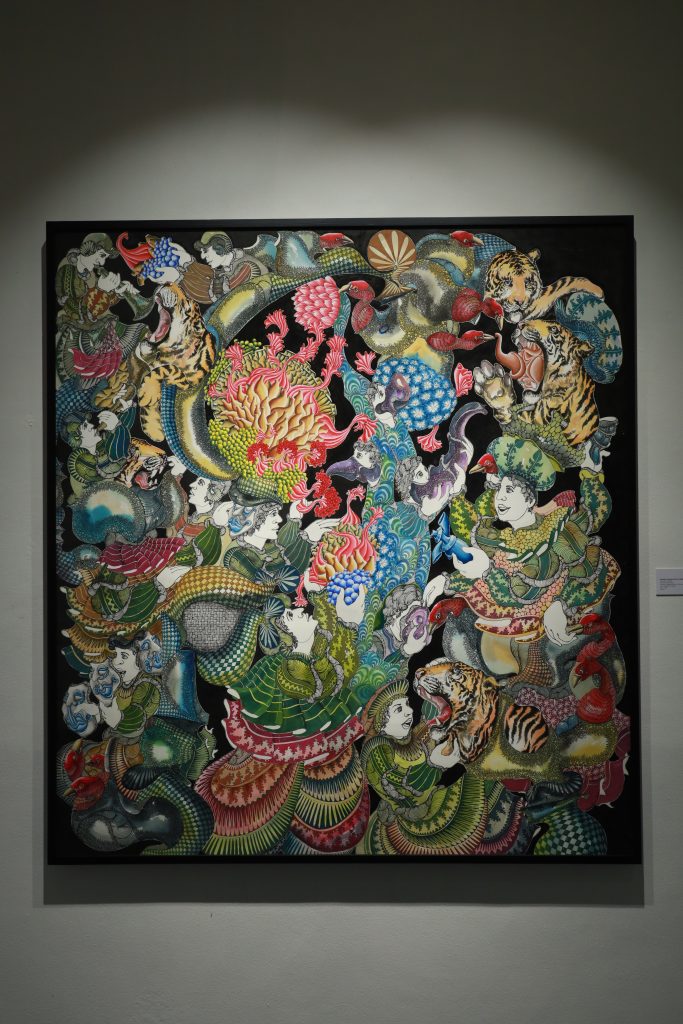
He shares his views on his other works, “I wanted brass for my sculptural work because of the structure, texture, and the form of it. I wanted to give it a different dimension, these are small, and I am going to come up with different sizes, bigger ones indeed. Your process keeps on evolving. I am still figuring out where it is going, it feels like magic. I wanted to distort the shape intentionally; I am an old-school traditional artist. It is not anything that I need to pre-plan, it comes out naturally. These are fast drawings; I just start to finish quickly. This scale of work needs a distinctive and clean environment where you can keep these works; I try to make my work clean in that sense.”
Image Courtesy – Sanchit Art


